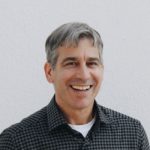
Interviewed by Mary Watkins, Professor, Community Psychology, Liberation Psychology, and Ecopsychology Specialization, Depth Psychology Program
Students often ask me “What are Depth Psychology Program graduates doing now?” This annual column in our specialization’s newsletter, Hearing Voices, introduces several alums a year, engaged in various forms of community and ecopsychological work. This year I am happy to introduce you to an alum who is in the national news: Jennifer Freed.
Jennifer Freed graduated in 2003. Her dissertation, After Sex, explored why many young teenage girls have become sexual and sexualized. Her summer community fieldwork planted the early seeds for her nationally recognized AHA! program. AHA! describes itself as an “educational program promoting social emotional learning, peace building, and joy through creative expression. We welcome youth who are excited to be part of learning, motivating, loving, empowering community.
AHA! is committed to transforming the world by empowering teens to create peaceful and connected communities. As advocates and allies for a socially and emotionally intelligent culture, AHA! teens focus on:
- resilience and creative contributions
- diversity and interdependence
- restorative approaches
- inclusive behaviors
- joyful, optimistic attitudes
- respect, empathy and reciprocity as the basis for social equity”
Mary: Jennifer, how did this begin?
Jennifer: In my first ear of fieldwork we gathered 20 teens and 15 adult facilitators, including colleague and Depth Program alum Brent Blair. We focused on social and emotional learning through the creative arts. Our first summer program was so successful and joyful that we were featured on the front page of the Santa Barbara Newspress. AHA! has always been about good news and creative solutions instead of FEAR AND REACTIVITY. We have always maintained a unique 1 adult to 6 teens throughout our 16 years. Since that summer, the program has grown to serve thousands of youth by providing a range of services to teens and families year-round through after-school, summer, and in-school programs in Santa Barbara County. AHA!’s mission is to develop character, social and emotional intelligence, imagination, and social conscience in teenagers.
Mary: Jennifer, I remember when you were planning your first summer fieldwork, you suggested the following vision. Instead of treating youth as though they carried a set of problems they needed to be cured from, they should be approached as potential healers of themselves and others. You imagined developing a community where youth would learn healing modalities like e-racism, theater of the oppressed, council, and dreamwork. How has this vision evolved?
Jennifer: From the beginning AHA! has seen youth as leaders, not followers. Now brain research has proven what we always intuited: teen brains are primed for “out of the box” thinking, intimate social connections, excitement and adventure, and need to be encouraged to problem solve instead of being told what to do.
Our programs in and out of school, and during the summer, engage youth in explorations of their passions, pains, and dreams with the adult facilitators as allies and co-participants. Youth constantly reshape our programs with their current needs and feedback. We are the hosts of their burgeoning worlds, not the “authorities.”
The distinguishing factor about AHA! is JOY. We believe all of us learn best when we PLAY and we deeply connect. We confront the most difficult topics such as self-hatred, abuse, parents with addiction, bullying, etc with a foundation of WONDER. We all face unbearable pains in our lives, some of us more than others. AHA! exercises and curriculum help us connect through these experiences and our multiple identities with EMPATHY and LOVE. Our AHA! Peace Builders have reached out to more than 8000 others through their peer led connection circles. This year alone 100 Peace Builders facilitated 1000 Connection Circles – enough to introduce 4000 additional peers, family and community members to this peace-building and community-building practice. Young people can and will transform their cultures when they have the tools they need.
Please see http://www.ahasb.org and http://www.peaceq.com
Mary: Tell me about your in Ally Leadership Program.
Jennifer: In this program, we have multiple goals:
- Healthy emotional management
- Relationship skills
- Celebration of diversity
- Conflict management/violence prevention
- Life purpose/talent, motivation, and inspiration
- Relationship success skills
- Public speaking skills
- Job skills and career development
- Nutrition and healthy living
Mary: What are a few of your most treasured lessons that you have learned from committing yourself to the development of emotional intelligence in the youth of Santa Barbara?
Jennifer: Everything you give comes back to you, and often unexpectedly. The alum who becomes a major activist and leader! The alum who stops you on the street and tells you he raises his kids right because of AHA! The young man who turns his life around and becomes an AHA! facilitator. The young woman who gives you a beautifully hand made drawing of you and your partner. The many young people who become the loving ear for the struggles of their peers. I have learned that being part of something so positive is a great thing in this world fraught with real systemic problems and CRAZY leaders.
Mary: In Santa Barbara you have been doing work across severe divides: racial, ethnic, and economic. How do you help to build bridges between parts of the youth community?
Jennifer: We provide the trainings and the youth can then do this bridge building naturally. Youth want to be TOGETHER. Youth want a world of ONENESS. Youth want to learn how to LOVE instead of to FEAR. We supply the training to be KIND and INLCUSIVE and BECOME UPSTANDERS and they eagerly undo DIVISION and PREJUDICE and they become AHA! Peace Builders.
Mary: What would you like to share with younger members of our community about starting a nonprofit and working to sustain it?
Jennifer: Starting a nonprofit is like birthing a baby and getting an entire village to help you raise that baby FOREVER. It is a calling, not a job, and it requires a vision beyond the ups and downs to sustain you and it. The most important thing of all is that you create a work culture you would like to live in because you will, in fact, be living in it. Also find a partner who makes you laugh all the way through every obstacle. I am the luckiest woman alive that my love partner Rendy Freedman is also the co-executive director of AHA! Our love is strengthened by our love for our community and our commitment to have lots of vacations.
Mary: Your organization recently received a very prestigious award and recognition. Please tell us about it?
Jennifer: AHA! was featured in the New York Times recently for being one of the top agencies in the nation providing social and emotional learning in an after school format
Our program was studied for a year by a national research team and they found that we were able to significantly move the dial for our participants in the following domains: Empathy, Emotional Management, Teambuilding, Problem Solving, Initiative, and Responsibility. We are also co-authors of the first national manual for Social and Emotional Learning for teens. You can download it for free at www.selpractices.org




